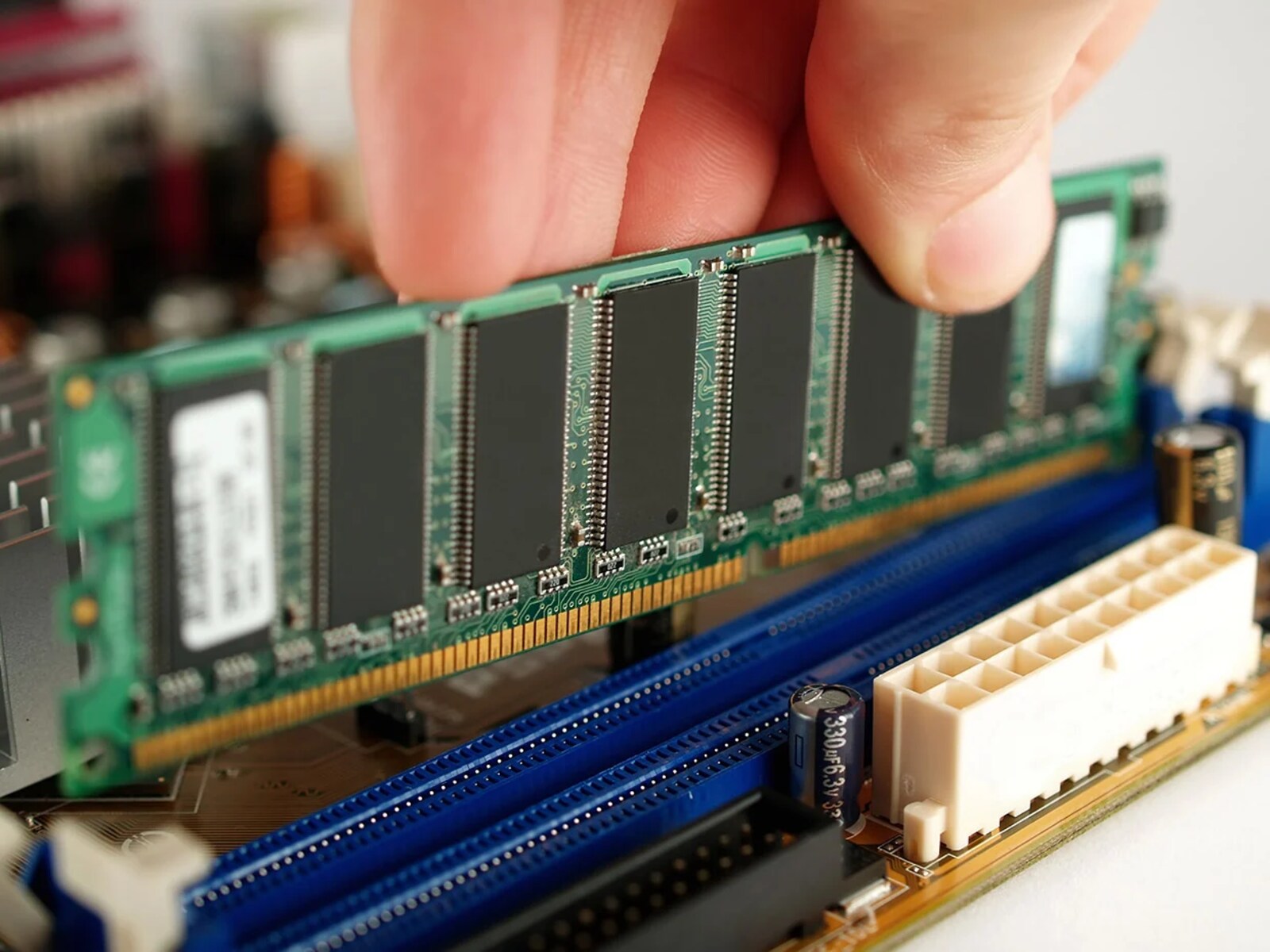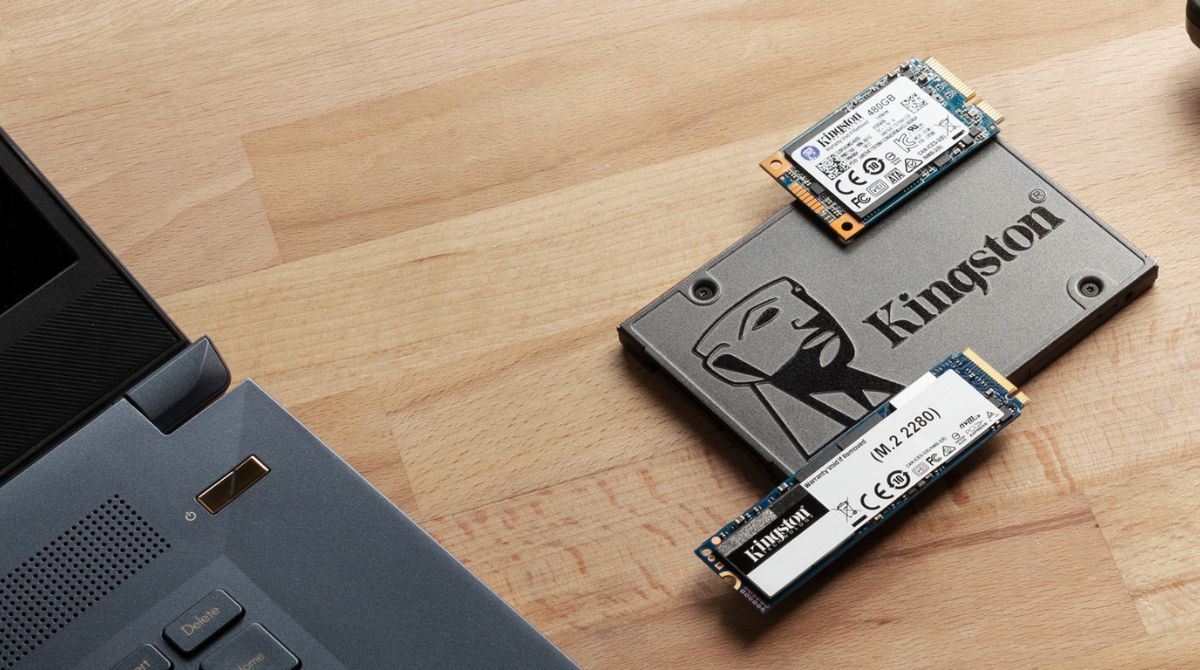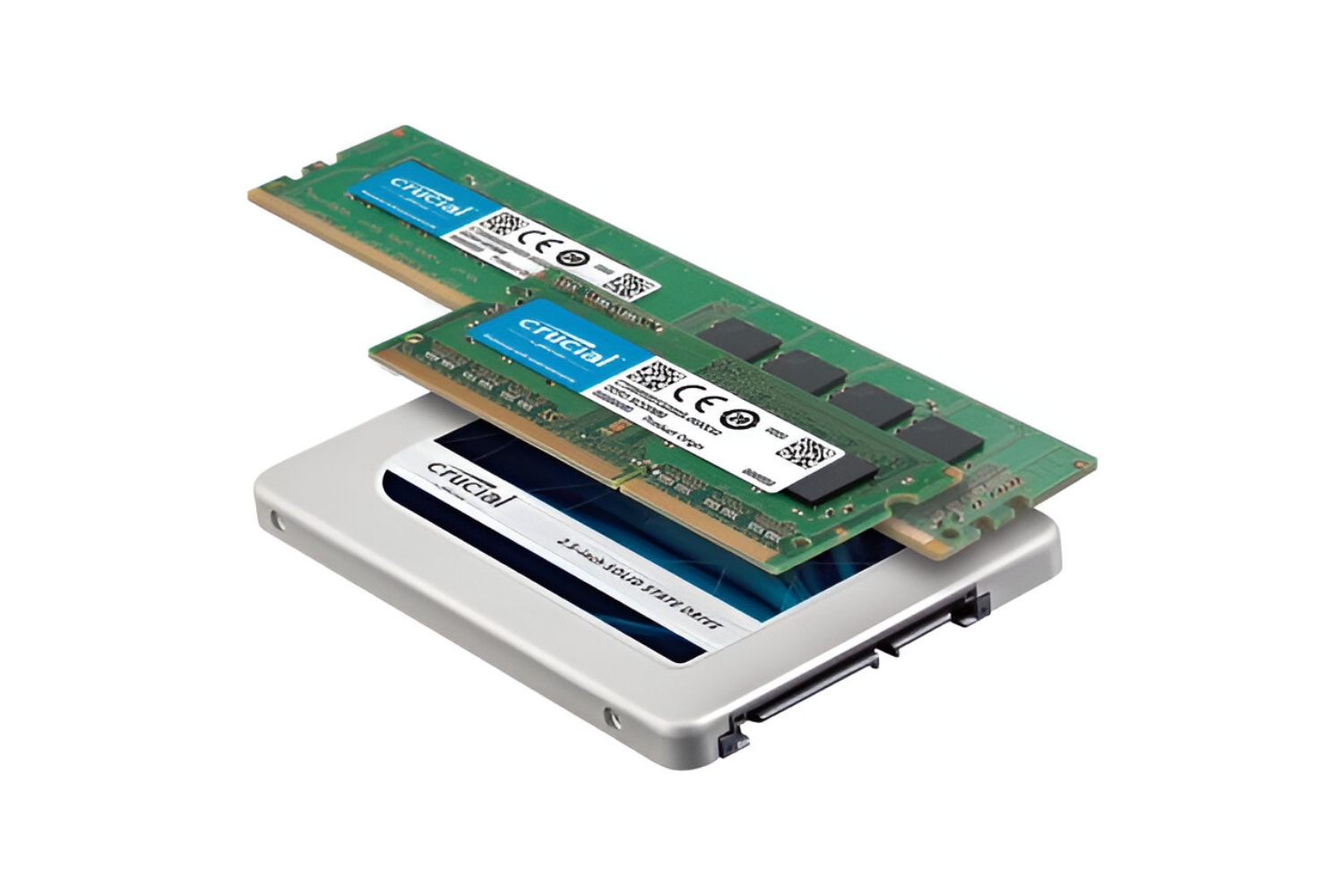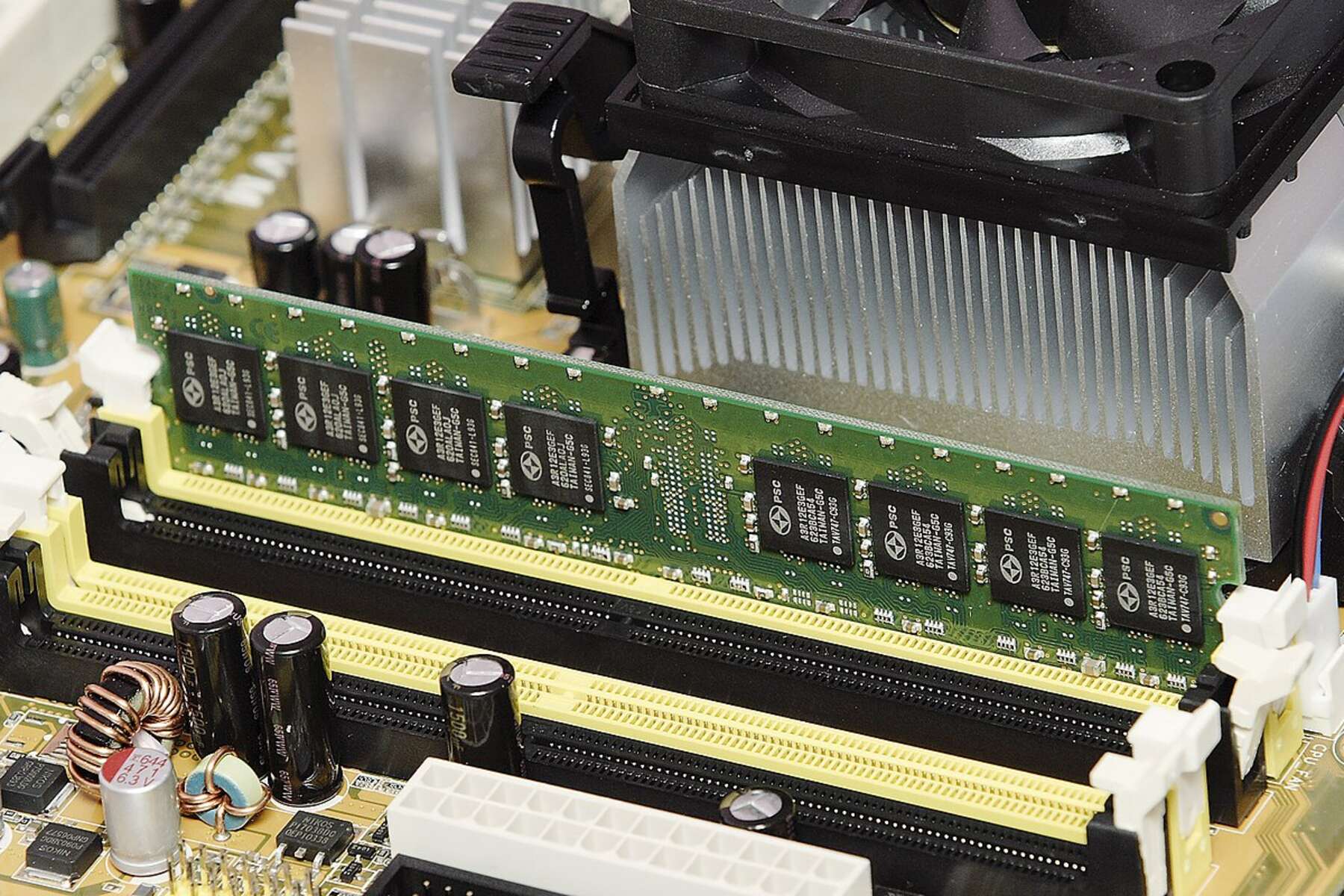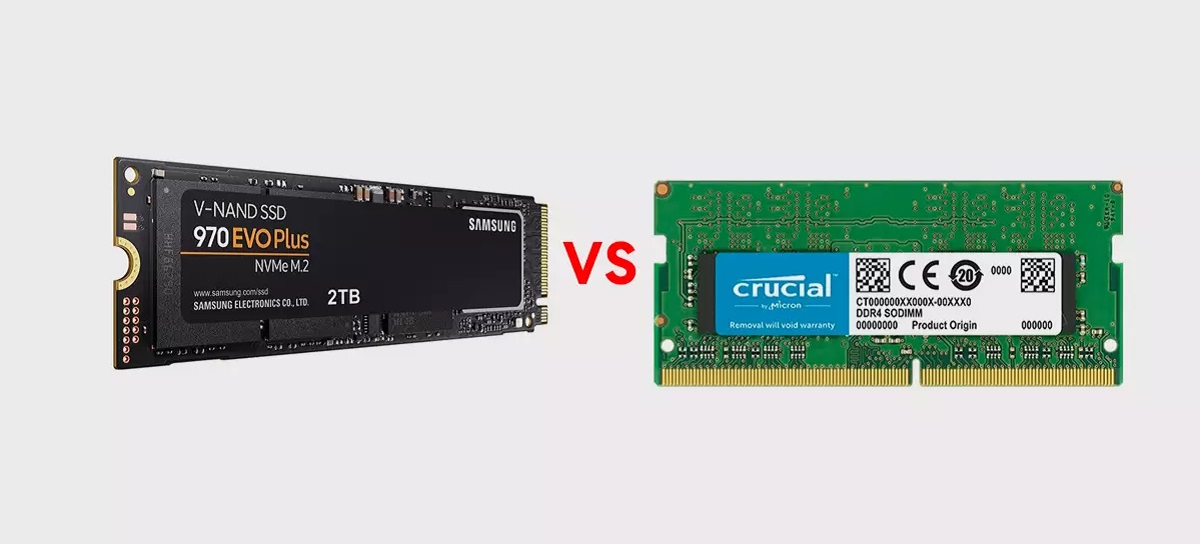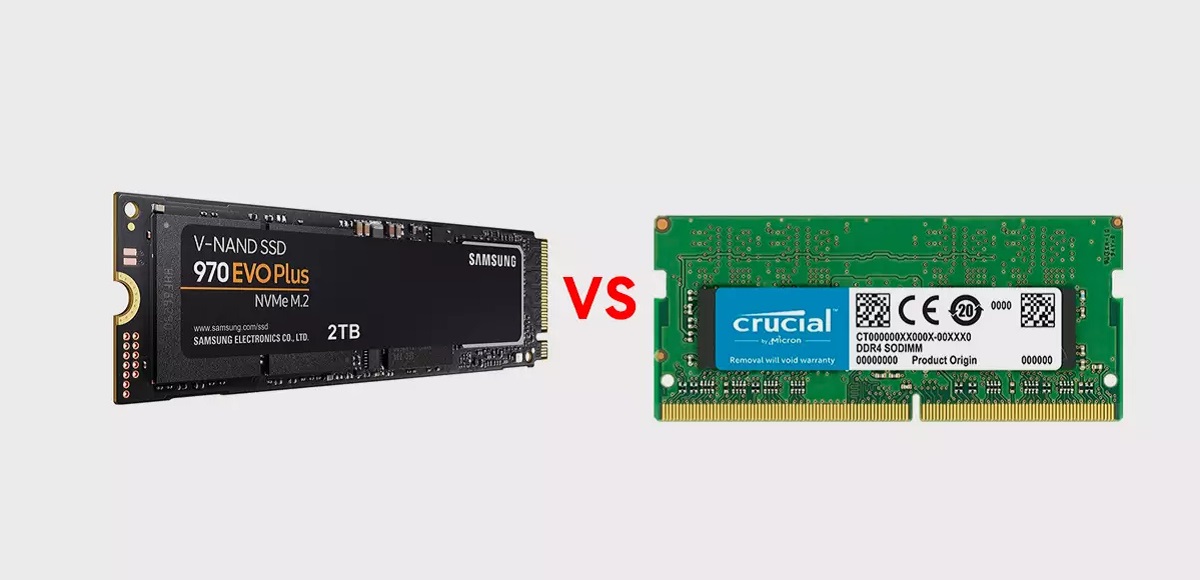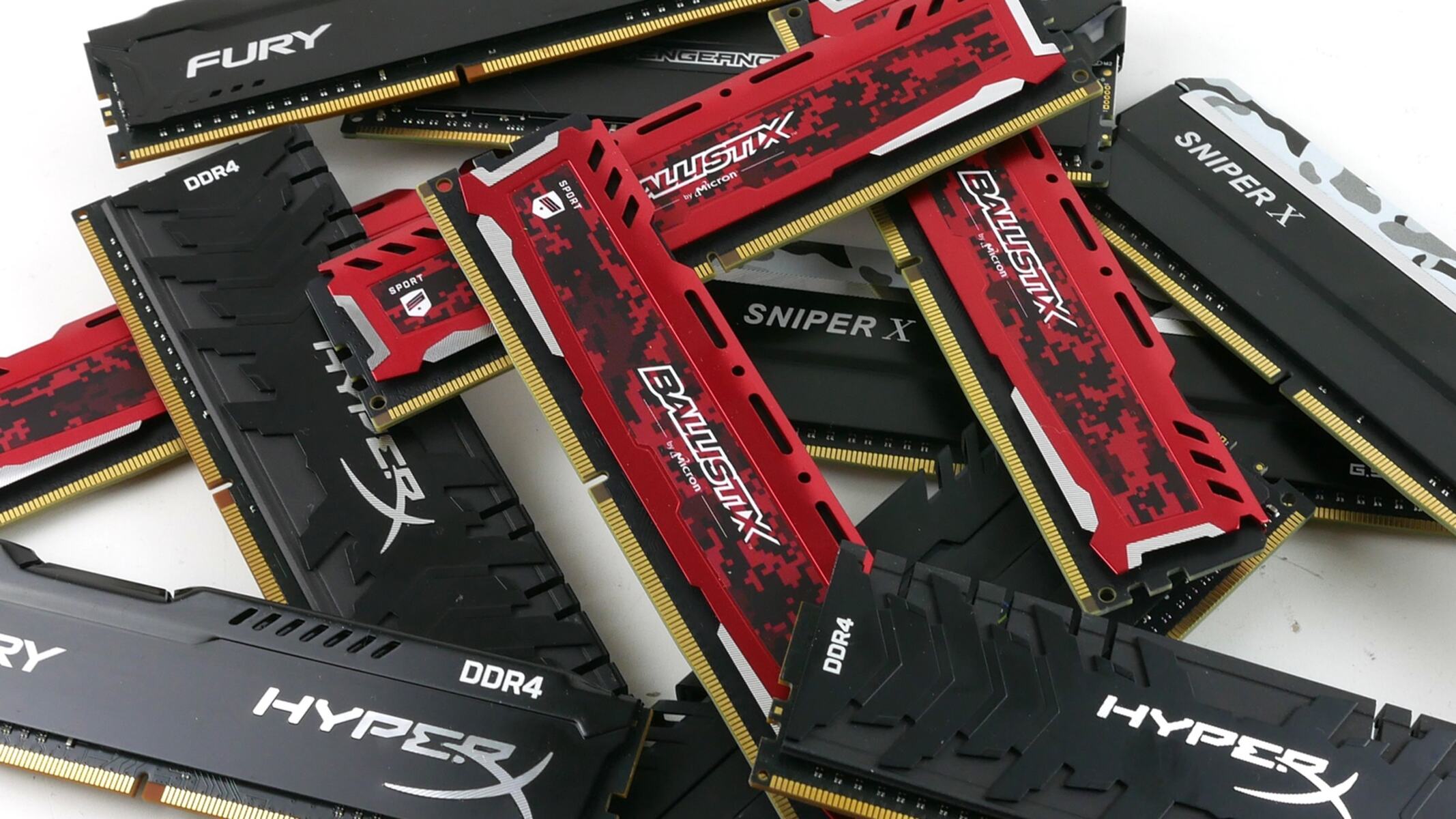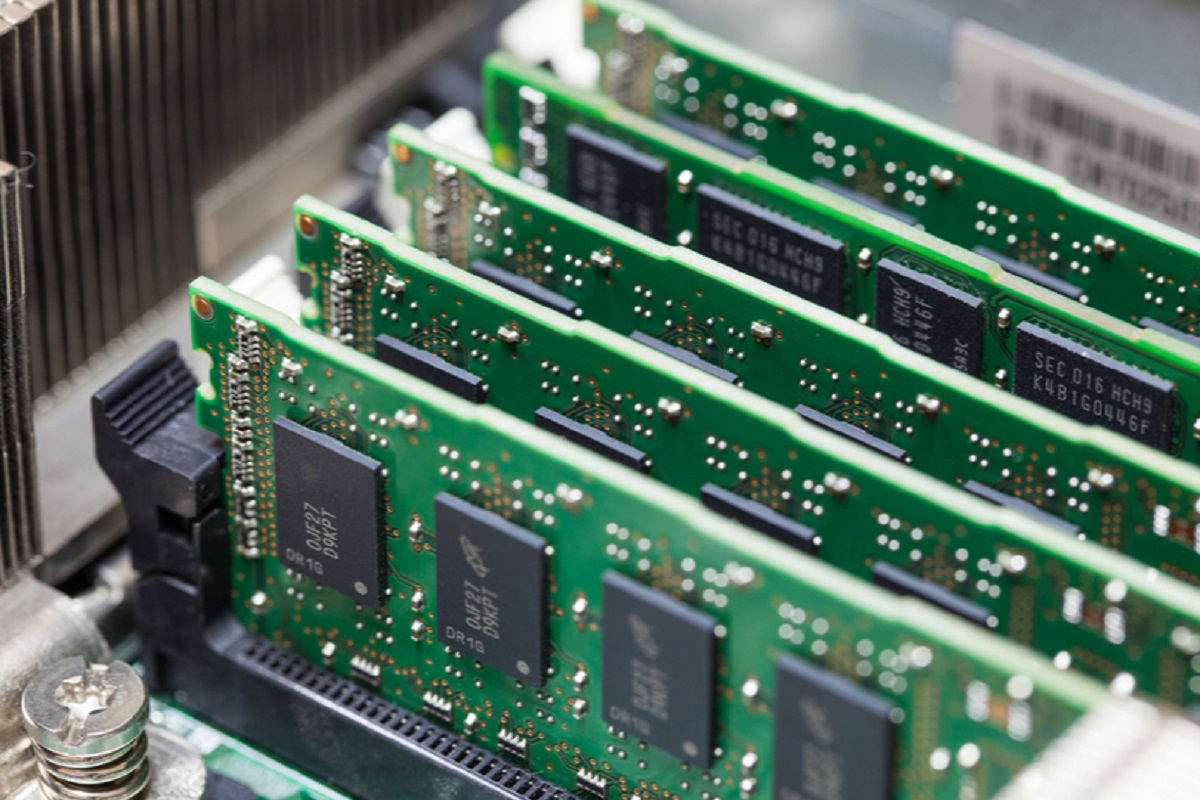What is RAM?
Random Access Memory, commonly known as RAM, is a vital component of a computer system. It is a type of volatile memory that provides temporary storage for data and instructions needed by the computer to perform various tasks. RAM allows the computer’s processor to quickly access and retrieve data, significantly improving the overall performance and speed of the system.
Unlike the permanent storage offered by hard drives or solid-state drives, RAM is considered temporary storage. This means that the data stored in RAM is lost when the computer is powered off or restarted. RAM acts as a bridge between the storage devices and the processor, ensuring that the most frequently used data and instructions are readily available for processing.
RAM plays a crucial role in multitasking, as it allows the computer to run multiple programs simultaneously. Each running program and its associated data are temporarily stored in RAM, enabling quick access and smooth transitions between different tasks. The more RAM a computer has, the smoother and more efficient its multitasking capabilities become.
RAM is also essential for running demanding applications like video editing software, graphic design tools, and modern computer games. These programs require a significant amount of memory to hold large files, process complex instructions, and render high-quality graphics in real-time. Insufficient RAM can cause these applications to run slowly, freeze, or even crash.
Moreover, RAM is an integral part of virtual memory management for operating systems. When the computer’s RAM capacity is fully utilized, the operating system utilizes a portion of the hard drive or solid-state drive as virtual memory, effectively extending the available RAM. This process helps prevent system slowdowns by allowing the computer to continue running applications even when the physical RAM is limited.
In summary, RAM plays a crucial role in the performance and functionality of a computer system. It provides temporary storage for data and instructions, facilitates multitasking, enables the smooth running of resource-intensive applications, and facilitates virtual memory management. Understanding the importance of RAM and its impact on system performance is essential for optimizing the computing experience.
RAM Terminology
When exploring the world of RAM, it’s essential to familiarize oneself with the common terminology associated with this vital computer component. Understanding these terms will help you make informed decisions when selecting and upgrading your system’s RAM. Here are some key terms to know:
1. Memory Module: A physical circuit board that contains multiple RAM chips. The most common type of memory module used today is the Dual In-Line Memory Module (DIMM).
2. RAM Speed: Refers to the speed at which data can be read from or written to the RAM module. It is measured in megahertz (MHz) or gigahertz (GHz). Higher RAM speeds allow for faster data transfer and processing.
3. CAS Latency: CAS stands for Column Address Strobe, and latency refers to the delay between memory input and output. CAS latency measures the number of clock cycles required for the RAM module to respond to a data request. Lower CAS latency indicates faster response times.
4. Memory Channels: Modern computers support multiple memory channels, typically dual-channel or quad-channel configurations. Memory channels allow for simultaneous data access and improve memory bandwidth, resulting in enhanced system performance.
5. ECC (Error-Correcting Code): ECC RAM includes additional circuitry to detect and correct errors that may occur during data transmission. It is often used in critical systems, such as servers and workstations, where data accuracy is paramount.
6. XMP (eXtreme Memory Profile): XMP is an Intel-developed technology that allows RAM modules to operate at higher speeds than standard specifications. It is useful for enthusiasts and gamers looking to maximize performance by overclocking their RAM.
7. Capacity: RAM capacity refers to the amount of memory a RAM module or system can hold. It is typically measured in gigabytes (GB) or terabytes (TB). Common RAM capacities range from 4GB to 32GB or more, depending on the system’s specifications.
8. Voltage: RAM modules operate at specific voltages, usually 1.2V or 1.35V for DDR4 modules. It is important to ensure that the RAM module’s voltage is compatible with your system’s requirements to avoid compatibility issues or potential damage.
By familiarizing yourself with these essential RAM terms, you’ll gain a better understanding of the technical specifications and features to consider when choosing and upgrading your computer’s memory. Whether you’re a casual user or a tech enthusiast, having a solid grasp of RAM terminology will empower you to optimize your system’s performance effectively.
Physical Dimensions of RAM
RAM modules come in various physical forms and sizes, and it’s important to consider these dimensions when choosing or upgrading your computer’s memory. The physical dimensions of RAM are crucial for compatibility with your system’s motherboard and memory slots. Here are the most common form factors of RAM:
1. DIMM (Dual In-Line Memory Module): DIMM is the most popular form factor for desktop computers. It features a rectangular shape with notches on the bottom and a row of pins on both sides. DIMM modules are available in different lengths, including standard DIMMs and shorter variants like SO-DIMMs for laptops and small form factor systems.
2. SODIMM (Small Outline DIMM): SODIMMs are smaller versions of DIMMs primarily used in laptops, compact PCs, and some server applications. They have a similar rectangular shape but are physically smaller, making them suitable for space-constrained systems. SODIMMs generally have fewer pins than DIMMs.
3. RIMM (Rambus Inline Memory Module): RIMMs were used in older systems that employed the Rambus memory technology. These modules have a different physical design with a unique connector and a heat spreader. RIMMs are no longer widely used or manufactured.
4. MicroDIMM: MicroDIMM modules are even smaller than SODIMMs and are primarily used in niche devices such as ultra-compact laptops, mini PCs, and embedded systems. They have a reduced number of pins and are not compatible with standard DIMM or SODIMM slots.
It’s important to note that different generations of RAM, such as DDR3, DDR4, and DDR5, have different notch positions and keying mechanisms to prevent incorrect insertion into incompatible slots. Ensuring compatibility between the RAM form factor, generation, and the motherboard’s memory slots is crucial to ensure proper installation and functionality.
When purchasing RAM, it’s recommended to refer to the computer’s user manual or consult the motherboard manufacturer’s specifications to determine the compatible RAM form factor and maximum module size supported. This information will help you select the appropriate RAM modules for your system without the risk of purchasing incompatible memory.
Understanding the physical dimensions of RAM is essential for hassle-free installation and compatibility. Whether you’re upgrading your desktop, laptop, or small form factor system, selecting the correct form factor and adhering to the manufacturer’s specifications will ensure smooth and reliable performance from your RAM modules.
RAM Sizes
RAM modules come in different sizes to meet the varying needs of computer users. The size of RAM refers to the total amount of memory a module can hold and is typically measured in gigabytes (GB) or terabytes (TB). Understanding the different RAM sizes available will help you determine how much memory is suitable for your specific computing requirements.
1. 4GB: 4GB RAM is considered the bare minimum for modern computing. It is suitable for basic tasks such as web browsing, word processing, and light multitasking. However, it may struggle with resource-intensive applications or heavy multitasking.
2. 8GB: 8GB RAM is commonly found in mid-range laptops and desktops. It provides ample memory for everyday tasks, including web browsing, office productivity, multimedia consumption, and moderate multitasking. This size is often recommended as a good starting point for most users.
3. 16GB: 16GB RAM is ideal for power users, gamers, and professionals who work with resource-intensive applications such as video editing, 3D modeling, and virtual machines. It allows for smooth multitasking, faster application loading times, and better overall system performance.
4. 32GB: 32GB RAM is targeted at enthusiasts, content creators, and professionals who demand high performance and need to run memory-intensive applications simultaneously. It is suitable for tasks like video editing, animation, professional-grade photo editing, and running virtual machines.
5. 64GB and beyond: RAM sizes of 64GB and higher are typically used in specialized workstations, servers, or high-end gaming rigs. These configurations are designed for heavy multitasking, server virtualization, complex simulations, and data analysis that require immense computing power and memory capacity.
It’s worth noting that the RAM size needed for optimal performance depends on various factors, including the operating system, applications used, and specific usage scenarios. It’s always recommended to assess your computing requirements and consider potential future needs when selecting the appropriate RAM size for your system.
It’s also important to ensure that your system’s hardware and operating system support the desired RAM capacity. For instance, 32-bit versions of Windows can only address up to 4GB or 8GB, depending on the specific edition, while 64-bit versions can support much larger RAM configurations.
By understanding the different RAM sizes available and evaluating your specific computing needs, you can make an informed decision when choosing the appropriate amount of memory for your system. Properly sized RAM will ensure smooth operation, optimal performance, and an enjoyable computing experience.
How to Measure RAM Size
Measuring the size of RAM is a straightforward process that can be done in a few simple steps. Whether you want to check the existing RAM capacity of your computer or determine the maximum capacity supported by your system, here’s how you can measure RAM size:
1. Check in the Operating System: The easiest way to determine the RAM size is to check the system properties in your operating system. In Windows, you can right-click on the “My Computer” or “This PC” icon and select “Properties.” The General tab will display the installed RAM size. On macOS, you can click the Apple logo in the menu bar, select “About This Mac,” and view the memory information under the “Memory” tab.
2. Use System Information Tools: Modern operating systems provide built-in system information tools that display detailed hardware specifications, including RAM size. In Windows, you can use the “System Information” tool, which can be accessed by searching for “System Information” in the Start menu. On macOS, the “System Report” provides comprehensive hardware information, including RAM capacity.
3. Open the Computer Case: If you’re interested in physically inspecting the RAM modules, you can open the computer case and locate the memory modules on the motherboard. The RAM modules will have labels that indicate their capacity. However, this method is not recommended for novice users or if you have a warranty in place that may be voided by opening the case.
4. Consult the Motherboard Manual: If you want to determine the maximum RAM capacity supported by your system, consult the motherboard manual or the manufacturer’s website. The manual will provide detailed information about the motherboard’s specifications, including the maximum RAM capacity and the supported RAM types and speeds.
5. Use Third-Party Software: There are several third-party software applications available that can provide detailed information about your system’s hardware, including the RAM size. Examples include CPU-Z, Speccy, and HWiNFO. These tools not only display the installed RAM size but also provide other useful information about the RAM modules, such as speed, timings, and voltage.
By utilizing these methods, you can easily measure the size of your computer’s RAM. Whether you need to check the existing RAM capacity or determine the maximum supported capacity, these steps will guide you in obtaining the necessary information. Properly measuring the RAM size is crucial for making informed decisions when upgrading or troubleshooting memory-related issues in your system.
Why RAM Size Matters
The size of RAM is a critical factor that greatly influences the performance and capabilities of a computer system. Having an adequate amount of RAM is essential for ensuring smooth operation and optimal functionality. Let’s explore why RAM size matters:
1. System Performance: RAM plays a crucial role in determining the overall performance of a computer system. When you have sufficient RAM, the system can store and access frequently used data and instructions quickly. This results in faster application loading times, smoother multitasking, and improved responsiveness. On the other hand, insufficient RAM can lead to sluggish performance, slow application launch, and system lag.
2. Multitasking: RAM enables a computer to multitask efficiently. When you run multiple applications simultaneously, each program requires a certain amount of memory to store its data and instructions. If the RAM capacity is limited, the system may struggle to handle the simultaneous demands of these applications, leading to slowdowns, freezing, or even crashes. Adequate RAM allows for seamless multitasking without compromising performance.
3. Resource-Intensive Applications: Resource-intensive applications, such as video editing software, graphic design tools, and computer games, require a significant amount of RAM to perform optimally. These applications often work with large files, process complex instructions, and render high-quality graphics in real-time. Insufficient RAM can cause these applications to run slowly, encounter errors, or even fail to run altogether. Having enough RAM ensures that these applications can work smoothly and efficiently.
4. Virtual Memory Management: RAM is an integral part of virtual memory management. When the available physical RAM is fully utilized, the operating system uses a portion of the hard drive or solid-state drive as virtual memory. This process allows the system to continue running applications even when the physical RAM is limited. However, relying heavily on virtual memory can significantly impact performance, as accessing data from the hard drive is much slower than accessing it from RAM. Sufficient RAM minimizes the reliance on virtual memory and improves system performance.
5. Future-Proofing: As technology advances, the demands placed on computer systems increase. What is considered sufficient RAM today may no longer be adequate in the future. By investing in larger RAM sizes, you can future-proof your system and ensure that it remains capable of handling the evolving demands of modern applications and operating systems. It also allows for smoother upgrades and expansions without the need to replace or upgrade RAM modules frequently.
In summary, RAM size matters because it directly impacts the performance, multitasking capabilities, and overall functionality of a computer system. Having enough RAM ensures smooth operation, optimal performance with resource-intensive applications, seamless multitasking, efficient virtual memory management, and future-proofing your system. It is essential to consider the RAM size when purchasing or upgrading a computer to ensure that it meets your specific computing needs and provides an enjoyable computing experience.
Conclusion
RAM, or Random Access Memory, is a vital component of any computer system. It provides temporary storage for data and instructions needed by the processor to perform tasks effectively. Understanding the various aspects of RAM is crucial for optimizing system performance and ensuring a smooth computing experience.
In this article, we explored the basics of RAM, its terminology, physical dimensions, sizes, and why RAM size matters. We learned that RAM acts as a bridge between the processor and storage devices, allowing for quick data access and smooth multitasking. It plays a critical role in running resource-intensive applications, such as video editing software and computer games, and helps manage virtual memory effectively.
When it comes to measuring RAM size, you can check the operating system’s properties, use system information tools, physically inspect the RAM modules, consult the motherboard manual, or employ third-party software. Determining the RAM size is essential for making informed decisions when upgrading or troubleshooting memory-related issues.
RAM size matters because it directly impacts system performance, multitasking capabilities, and the ability to run resource-intensive applications smoothly. Having sufficient RAM ensures optimal functionality, responsiveness, and efficient virtual memory management. It also helps future-proof your system, enabling it to handle the demands of evolving technologies and applications.
In conclusion, RAM is a vital component that significantly influences the performance and capabilities of a computer system. By understanding RAM basics, terminology, physical dimensions, measuring RAM size, and the importance of RAM size, you can make informed decisions when selecting and upgrading your system’s memory. Investing in sufficient RAM ensures optimal performance, seamless multitasking, and a smooth computing experience.







